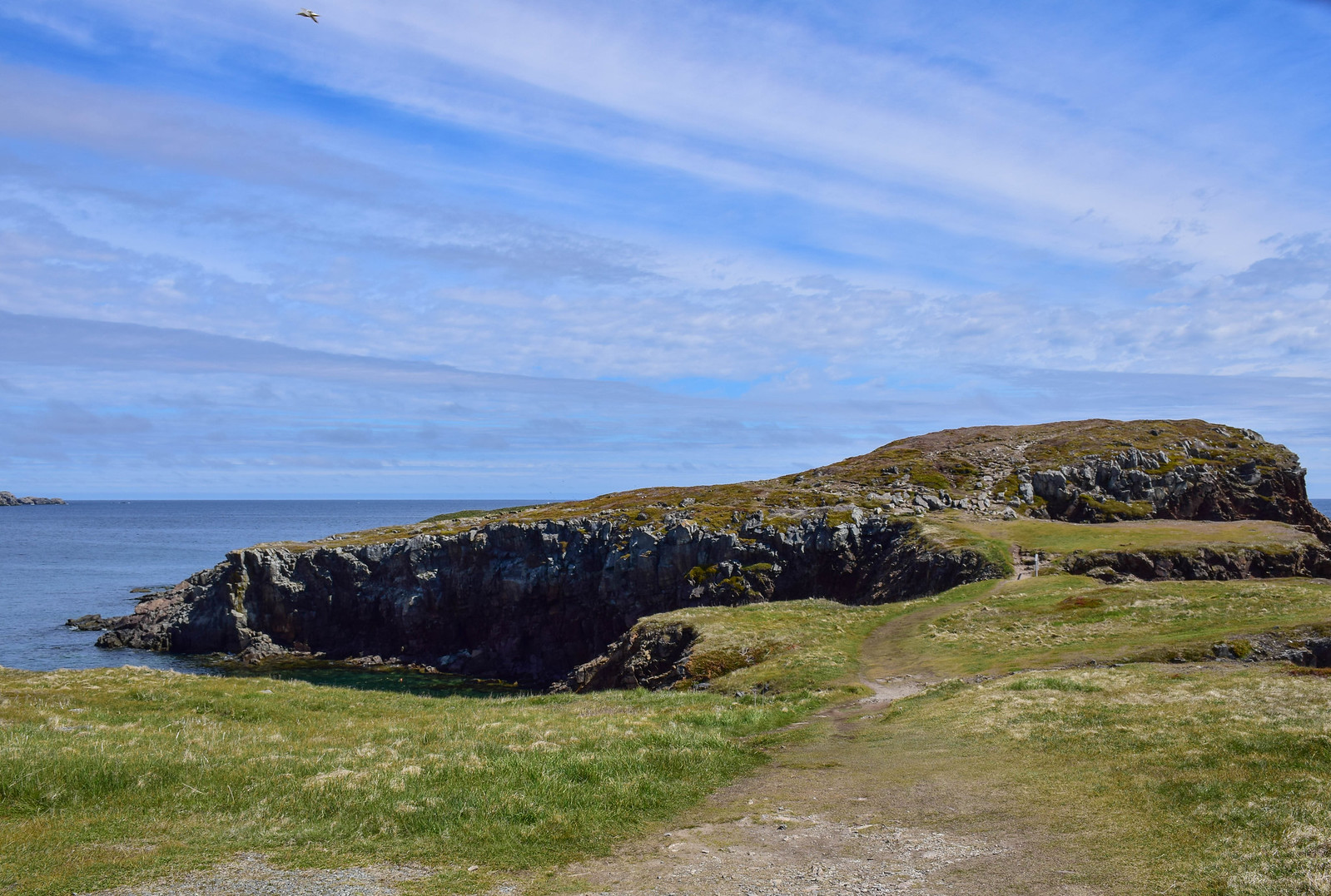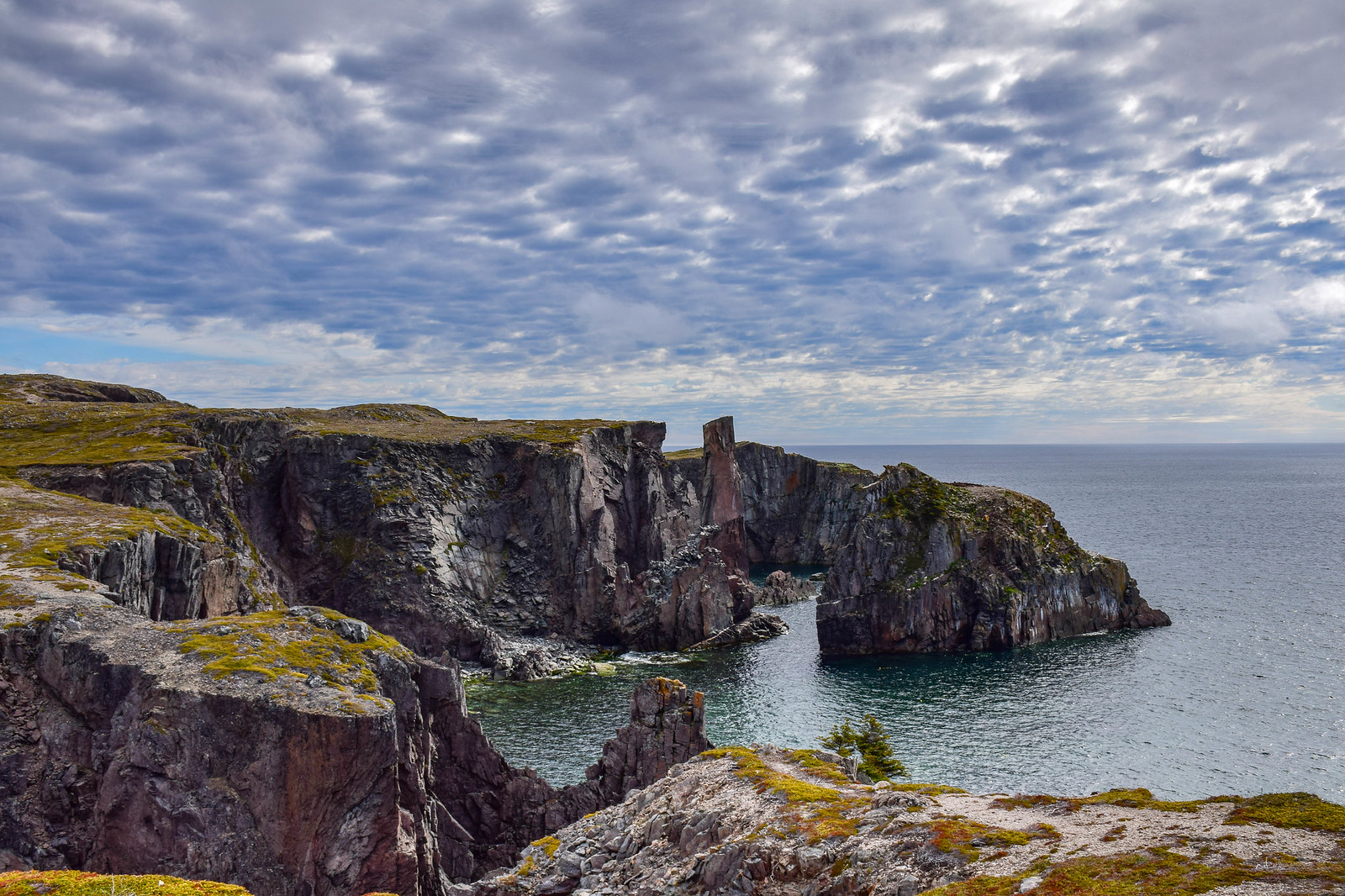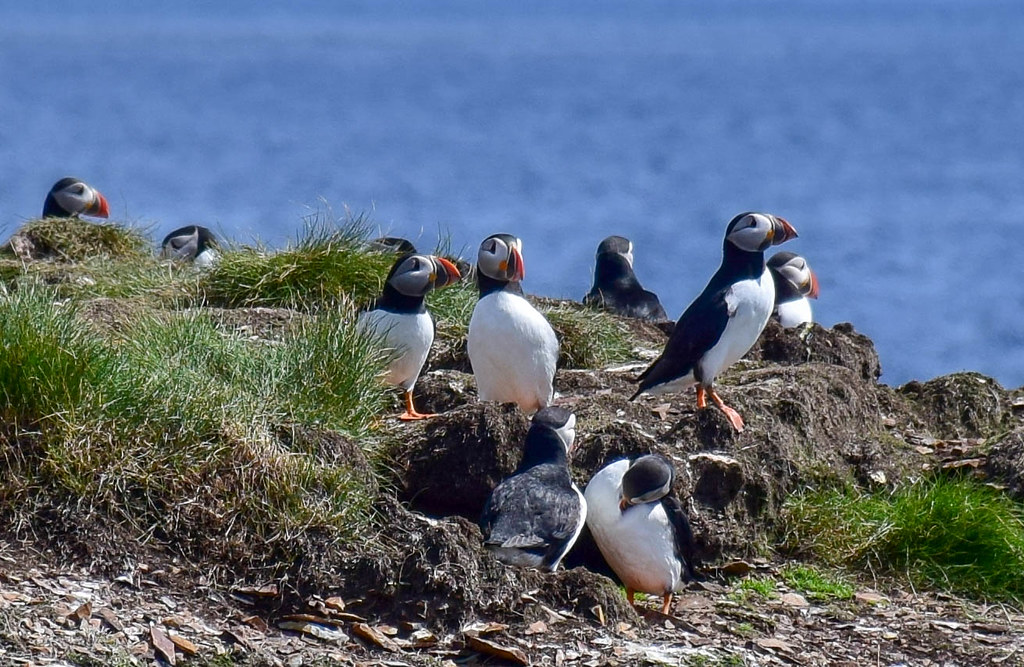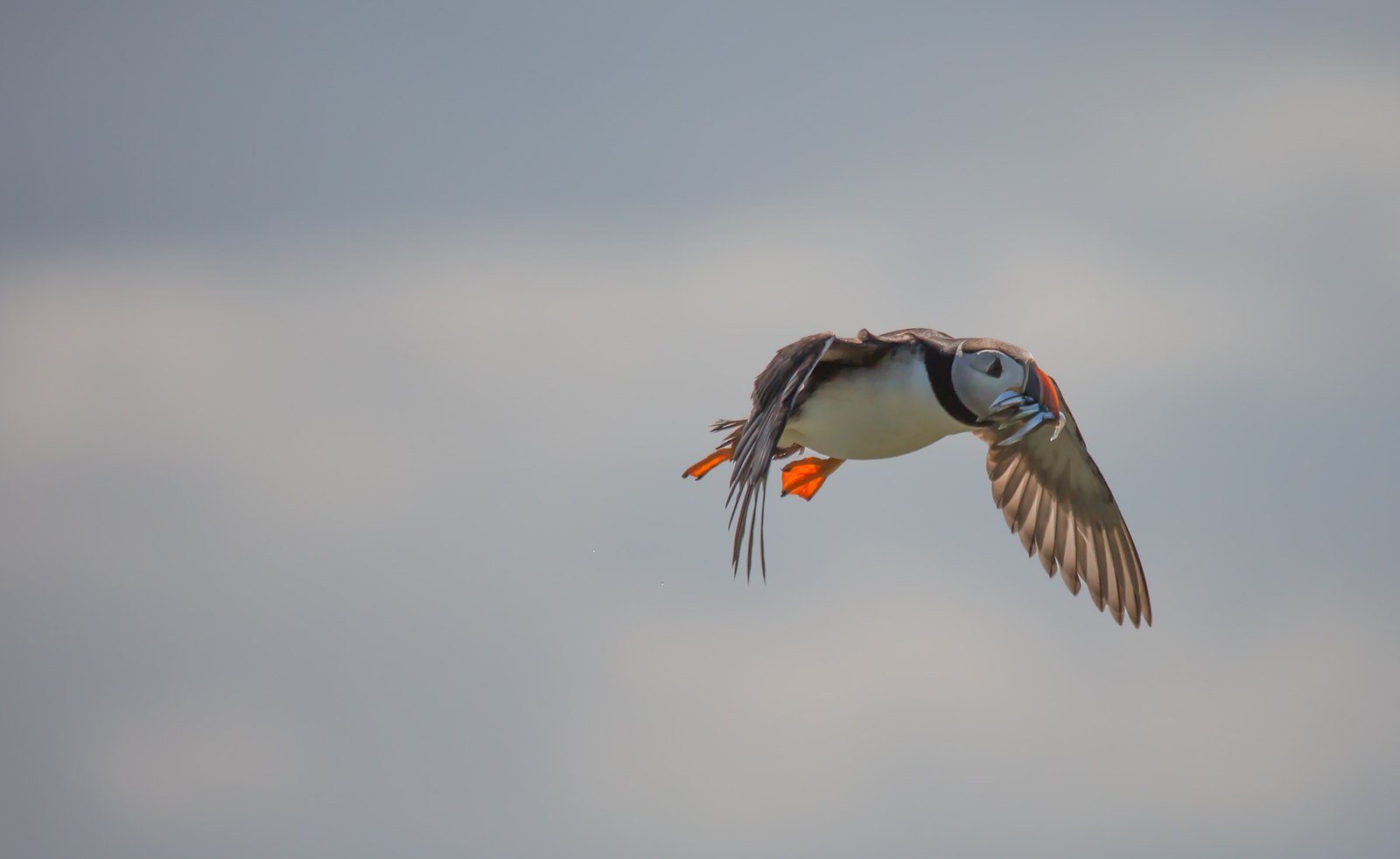
Where To See Puffins in Newfoundland, Canada
Even if you’re not a birder, you won’t want to miss the chance to see puffins in Newfoundland and Labrador when you visit Canada’s easternmost province.
Why?
Well, because they are the official bird of Newfoundland, of course.
Or more likely because they are undeniably cute and will give you a good dose of the warm fuzzies. When it comes to our feathered friends, we humans suddenly can’t seem to resist traits like “pudgy and squat” and “walks like a clown”.
Here is the lowdown on where to see puffins in Newfoundland and the best time to see them, along with some other fun facts about puffins.
I’ve also included options if you want to take one of the puffin tours in Newfoundland.
When to see puffins in Newfoundland

Puffins at Elliston Point
Newfoundland puffins are migratory sea birds and spend most of their lives on their own at sea feeding, swimming and going places.
But in the spring and summer, puffins gather in colonies on coasts and islands of the North Atlantic ocean to breed.
The puffins get all dressed up for the affair. In the winter, their beaks are grey, but in the spring, they turn a flashy orange colour. Fortunately for us, this makes them all the more photogenic.
The best time to see puffins in Newfoundland is from mid-May to mid-September.
The best time of day to see Newfoundland puffins is early morning or late afternoon. This is when they’re the most active in gathering food.
Where do you see puffins in Newfoundland?

Elliston Point, Newfoundland
Puffins set up their summer homes on rocky islands along the coast, away from potential land predators.
The best places to see puffins in Newfoundland are: the Bonavista Peninsula, the Witless Bay Ecological Reserve; and Cape St. Mary’s Ecological Reserve.
Here’s a rundown on each of the locations where you can see Newfoundland puffins. Also, see the Newfoundland map below to help plan your puffin viewing.
Bonavista Peninsula – Elliston Point Puffin Sites
One of the most popular puffin viewing sites in Newfoundland is Elliston Point. It’s the closest spot on land to watch puffins nesting on a rocky outcrop.
Typically about 300 puffin pairs make their summer home here.
Elliston Point is on Maberly Road near the town of Elliston (also known as the root cellar capital of the world!) It’s just under 10 kilometres from the town of Bonavista. You can park at a nearby lighthouse and take a five-minute walk along a path to the viewing area.
If you want to find a few of the more secluded puffin hangouts in the Bonavista area — places not yet discovered by tourists — I recommend a puffin tour with Bonavista Adventure Tours. Local tour guide, Bonnie and I went for a morning hike along this splendid landscape and, other than plenty of puffins, there was no one else around.


Where to stay in Bonavista:
The Lancaster Inn B&B is known for its comfy beds and delicious home-cooked breakfasts. Each room in this 4-star inn has a private sitting area. Wi-Fi and parking are included. Check prices and availability at the Lancaster Inn B&B.
Witless Bay Ecological Preserve – Bay Bulls
You can see the largest North American Atlantic puffin colony in the Witless Bay Ecological Reserve. It’s estimated that more than 260,000 puffins nest here in the late spring and summer, along with thousands of other sea birds.
The Reserve consists of four islands, so you can only see the puffins from the water on a boat tour. Tours depart from the town of Bay Bulls. See the tour options below.
This is the closest puffin colony to Newfoundland’s capital, St. John’s – – it’s just a 20-minute drive from the city.
Where to stay in St. John’s:
The Jag Boutique Hotel is right downtown, minutes away from the city’s bars and restaurants. The hotel has a 24-hour front desk and valet parking. Check prices and availability at the Jag Hotel.
Another downtown option is Blue on Water. This 4-star hotel near the port is also known for its restaurant. Check prices and availability at Blue on Water.
Cape St. Mary’s Ecological Reserve
If you like birdwatching in general, Cape St. Mary’s is the place for you.
The most popular spot is Bird Rock, one of the largest nesting sites for thousands of northern gannets. While puffins are not common here, you will see northern gannets, razorbills, cormorants and common murres, among others. There’s a 1.3 kilometre path to the main viewing station to watch the action at Bird Rock.
The interpretive centre, which provides guided hikes, is open from early May until early October.
The Reserve is on the Cape Shore Drive off Route 100, about a two-hour drive from St. John’s.
Newfoundland Puffin Tours
In Bonavista, as mentioned, I thoroughly enjoyed my puffin tour with Bonnie at Bonavista Adventure Tours. She knew all of the non-touristy spots for seeing Atlantic puffins.
To visit the Witless Bay Ecological Reserve, there are two tour options departing from the town of Bay Bulls.
1. The Newfoundland Puffin and Whale Watching cruise by Gatherall’s departs on a catamaran that can accommodate 100 people. The cruise lasts 1.5 hours. Check departure times for Gatherall’s Puffin and Whale tour.
2. The O’Brien family offers a 2-hour whale and bird tour to Witless Bay. The family has 40 years of boat tour experience. Check departure times for O’Brien’s whale and bird tour.
On either of these puffin tours, you’ll see thousands of birds and there’s a chance to see whales from mid-June to mid-August. You could also see icebergs in the spring (to about mid-June). Both tours offer shuttle options from St. John’s to Bay Bulls for an extra fee.
At Cape St Mary’s Ecological Reserve, you can take a tour from the Interpretive Centre or simply walk the path on your own (although check the trail conditions with the centre before you do).
Tips for spotting puffins in Newfoundland – What to watch for

Look for puffins in Newfoundland along the rocky coastline and on islands
Puffins make a cozy home for themselves while they are starting a family on land.
If you look closely using binoculars, you will see that they dig burrows on grassy cliffs and in rocky crevices.
Inside their burrows, the puffins build a nest, lined with feathers, where the female will lay one egg. Both parents take turns incubating the egg and, after about 45 days, a “puffling” is born.
Watch for romance in a Newfoundland puffin colony

For puffin couples, it’s a “same time next year” kind of thing. Atlantic puffins usually mate for life. They meet their matches at sea and then return together to the same place every year.
Before they nest, they perform a courtship ceremony where they rub their beaks together. Puffins, it seems, are romantics at heart, maybe one of the many reasons we find them so endearing.
Track the Newfoundland puffins in flight

It’s fun to watch the adult puffins in Newfoundland hunt for fish to feed the family, but it’s not easy to keep your eyes (or your camera lens) on them.
Although they can be awkward, puffins are fast, flapping their wings up to 400 times a minutes and zooming through the air at speeds of up to 88 kilometres an hour. (55 mph).
They’re also good swimmers, using their feet as a rudder to dive under water to catch their favourite fish, usually sand eels, herring or capelin. You’ll often see the Atlantic puffins carrying many fish at once. You’ll need your binoculars to see the Newfoundland puffins bring home their fast food.
Planning for your Newfoundland puffin tour

As mentioned, to get a good look at the puffins, you’ll need binoculars (Bonnie from Bonavista Adventure Tours brought some along.) Or check out this review of outdoor accessories like binoculars.
You’ll also need a zoom lens for your camera (300 mm–or more– is ideal). See these zoom lens options. Once in awhile, the puffins might come closer to you, but it’s not something you can count on.
In Newfoundland, you should always be prepared for variable weather, with a fleece and rain gear. I always wear a merino wool base layer, which is comfortable in any situation.
It wasn’t an issue when I visited the puffins in Elliston but a strong bug spray is always a good idea in Newfoundland. (See Ben’s 100% Deet Tick Mosquito Insect & Bug Repellent 3.4 Ounce Oz Pump Spray (2 Pack). )
Additional FAQs about seeing puffins in Newfoundland
What species are the Newfoundland puffins?
There are four types of puffins. The puffins in Newfoundland are Atlantic puffins because they’re the only ones that live in the Atlantic Ocean. The other three puffin species live in the Pacific Ocean.
Atlantic puffins are the smallest type of puffin, averaging just over 11 inches tall.
How can puffins carry so many fish without dropping them?
Atlantic puffins have spines on their tongue and the roof of their mouth that help them hold tiny fish without losing any as they fly.
How long do puffins live?
The average life span of a puffin is 25 years.
Are Atlantic puffins endangered?
According to the Nature Conservancy of Canada, puffins are considered to be a vulnerable species at the global level.
Today, Atlantic puffins are protected, but they still face threats from climate change which impacts the availability of their food sources.
Map of the best places to see puffins in Newfoundland
Click on the location markers for more details.
More Information:
Newfoundland puffin tours: See Bonavista Adventure Tours or for Witless Bay, see Gatherall’s Puffin & Whale Tour or O’Brien’s Whale & Bird Tour
Where to stay in Bonavista: Lancaster Inn B&B
Where to stay in St. John’s: The Jag Boutique Hotel or Blue on Water
Tourism Information: Newfoundland and Labrador Tourism
Suggested Reading: Fodor’s Nova Scotia & Atlantic Canada: with New Brunswick, Prince Edward Island, and Newfoundland (Travel Guide), The Day the World Came to Town: 9/11 in Gander, Newfoundland
, The Shipping News
, Sweetland: A Novel
Travel Bliss Now received a media rate from Bonavista Adventure Tours, but my opinions are entirely my own.
Pin it:
Things To do in Dildo, Newfoundland
Why this Newfoundland Tradition is a Can’t Miss Experience
How to Find Icebergs and Other Natural Wonders in Newfoundland












Sorry, but your credibility got blown when you listed Cape St. Mary’s Ecological Reserve as a place to see puffins. There are northern gannets, common murres, thick-billed murres, black-legged kittiwakes, and razorbills at Cape St. Mary’s but it is NOT and never has been a place to see puffins. As a former president of the Friends of Cape St. Mary’s , the fundraising organization for the Cape, and a professional naturalist guide who’s been taking groups to the area since the early 1990s, I know this to be true. I only wish you’d chosen to consult with someone knowledgeable about the area and its birds before publishing.
Thanks for your input Jean. I added Cape St. Mary’s to the list on the assumption that people who are interested in seeing puffins may also be interested in birdwatching in general here. That’s why the paragraph starts with, “If you like birdwatching…..” Based, on your comments, I will adjust the wording to make it clear that this is not a place to see puffins. I was, however, told by locals that you may see them there on occasion. Is that not correct?